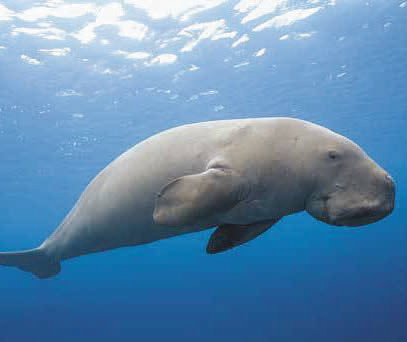Unlike the three species of manatee, the other surviving members of the order Sirenia, dugong are the last surviving members of the Dudongidae family. While manatees can feed on many different types of plants, due to physiological differences dugong are seagrass specialists. Dugong can be found in warm coastal waters from the western Pacific Ocean to the eastern coast of Africa, including Australia. We have the world’s largest population, from Shark Bay in WA to Moreton Bay just to our south. Dugong typically prefer seagrass and particularly deep-water subtidal seagrass species such as Halophila ovalis, (dugong grass). While dugong grass does occur here it’s the shallow water intertidal Zostera capricorni (eel grass) that is the most prolific in the Noosa River and lakes system.

Seagrass has declined from many areas including the Noosa River over the past few decades, with the worst periods of decline following major flooding events such as those experienced right along the east coast earlier this year. When these events occur, we often see dugong on the move in search of food in other places. In many ways we know this because animals in this situation, often strand in emaciated condition due to starvation. The young animal stranded recently at Goat Island was almost certainly another example. Whatever threatens seagrass also threatens dependent species such as dugong, which are currently listed as vulnerable in Queensland as well as the IUCN Red List.
Fun fact: When ‘weaning’ from their mother’s milk juvenile dugongs eat dugong faeces which provides the necessary gut flora for their adult diet of seagrass.


